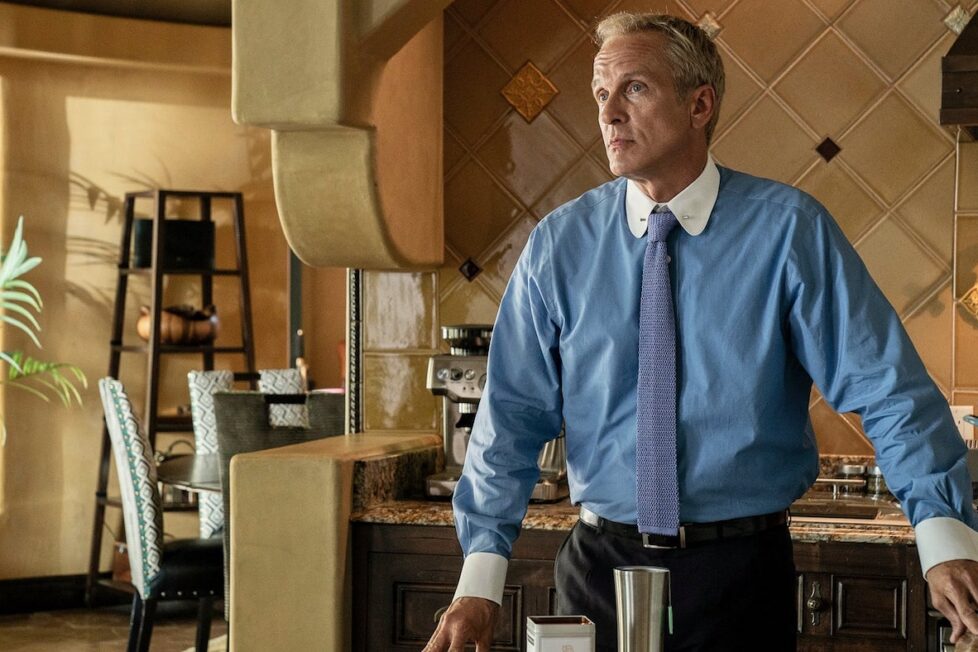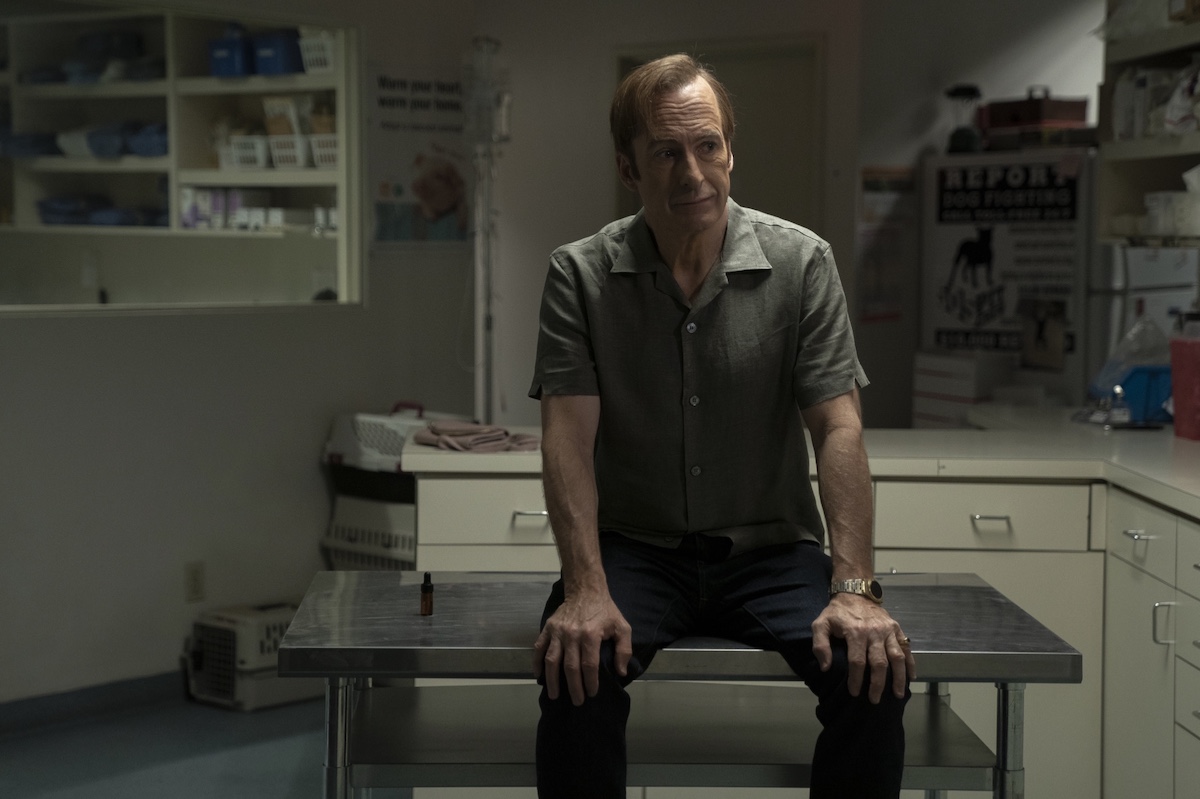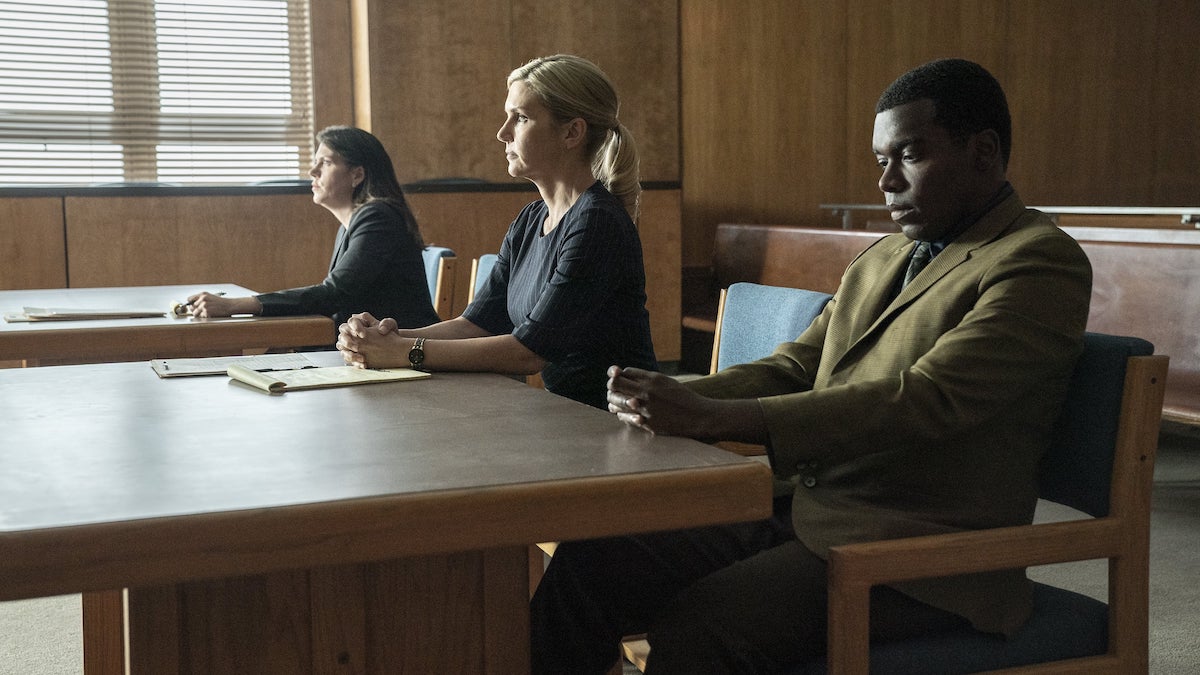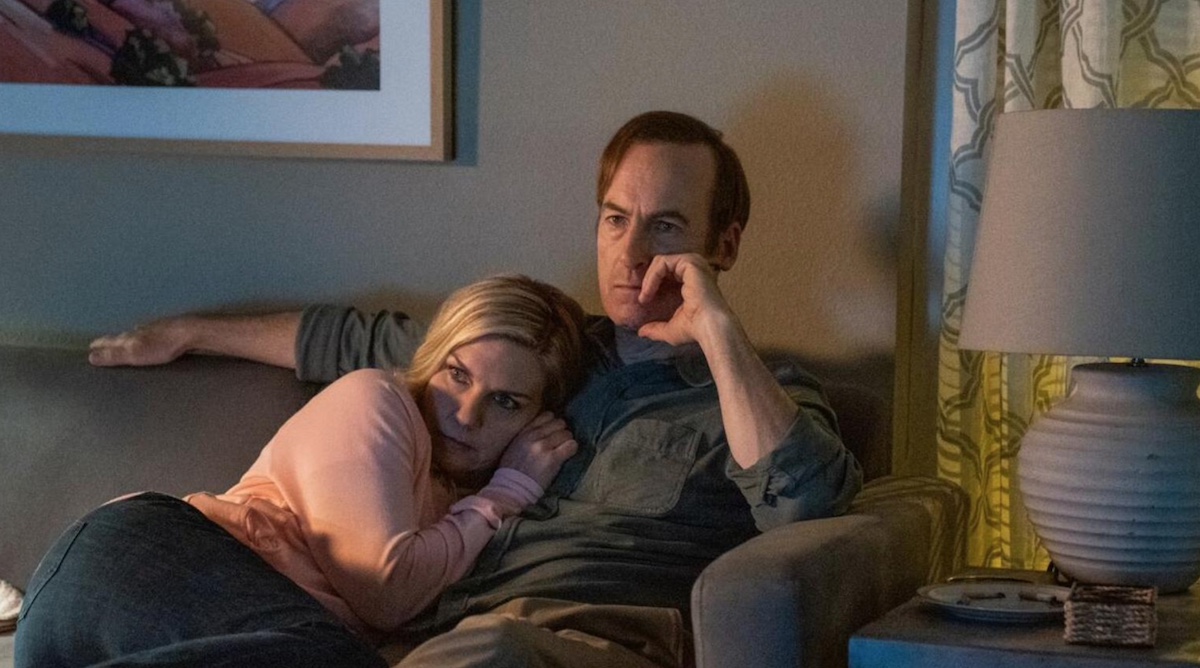BETTER CALL SAUL, 6.6 – ‘Axe and Grind’
Kim and Jimmy enlist a knowledgeable contact, Howard scrutinises Jimmy's business practices, and Lalo locates a source of information...

Kim and Jimmy enlist a knowledgeable contact, Howard scrutinises Jimmy's business practices, and Lalo locates a source of information...


Kim Wexler (Rhea Seehorn) is the big question mark hanging over Better Call Saul’s ending, and the opening flashback to “Axe and Grind” reminded us she’s never been the unblemished bastion of truth and justice, which led to her becoming a lawyer. A scene set in the 1980s showed “Kimmy” (Katie Beth Hall) caught trying to steal a necklace and earrings in a jewellery store, with her apologetic mother (Beth Hoyt) pleasing for leniency from the manager, only for it to be revealed that Mrs Wexler was putting on an act and sole the items herself and her daughter was covering. It showed Kim’s used to being a criminal accomplice, so in some way growing close to Jimmy (Bob Odenkirk), pulling off scams, and getting into mischief, is almost an act of nostalgia for her she was raised. I just wonder if Kim’s now become the “Mrs Wexler”-type, whom nobody ever suspects is the brains of the operation? She wears her mother’s stolen earrings throughout this episode.
In the present day, I’m enjoying the little insights we’re getting into Howard Hamlin’s (Patrick Fabian) personal life and daily routines. We know he goes to therapy, but “Axe and Grind” revealed he has a strained relationship with her wife Cheryl (Sandrine Holt), who isn’t enthused by Howard’s cheerful morning disposition and ungratefully tips his homemade coffee into a plastic flask the moment she’s handed it. There doesn’t seem to be any love and affection between the Hamlins, so perhaps Cheryl is only still with Howard for the lifestyle she’s grown accustomed to, or recent events with Jimmy trying to ruin his life impacted Cheryl more than we’ve known? She certainly knows about the vandalism caused by the bowling balls Jimmy threw onto their car once. Also interesting to note that Howard and Gus both seem to exist as two separate people—successful in public, troubled in private.

More interestingly, I like how Howard is being proactive against Jimmy and has hired a private investigator to keep tabs on him because he suspects another attempt to tarnish his good name. But the only weird thing the P.I noticed is Jimmy going to withdraw $20,000 in cash, but Howard is certain he would only need that amount of money for illegitimate reasons.
Jimmy and Kim’s plans are further along than I expected too, as their so-called “D-Day” is imminent and involves the use of an untraceable psychotropic drug they get from Dr Caldera (Joe DeRosa), the vet with criminal connections, which makes someone look rapidly strung out when taken. The absence of Dr Caldera in Breaking Bad is also explained because it seems he’s moving on from being a middle-man, but not before Jimmy gets to see his encrypted “black book” of secret contacts—which includes a business card for the familiar Best Quality Vaccum store, that famously arranged the disappearance of Walter White and Jesse Pinkman, and results in Saul Goodman assuming the fake identity of Gene. One suspects Jimmy will soon be in possession of Dr Caldera’s little book and use its contents to prop up his growing reputation as the go-to man for underhanded lawyering.
The exact nature of Jimmy and Kim’s plan isn’t revealed this week, but it also seems to involve the need for someone to double as Sandpiper mediator Rand Casimiro with a fake moustache (great to see Jimmy’s team of student filmmakers back helping him out), and “D-Day” coincides with a luncheon Kim has with Clifford Main (Ed Begley, Jr.) to discuss the development of a justice reform program—The Jackson Mercer Foundation. Their whole plan appears to be in danger of collapse, however, after Jimmy notices the real Casimiro in a liquor store with his arm in a sling (a detail they didn’t know about his appearance, meaning their faked Casimiro photos don’t look real now), so Jimmy tries to pull the plug as Kim heads to her luncheon in Santa Fe. However, Kim’s not up for delaying and regrouping, so she spins her car around and heads back to Albuquerque to ensure things happen as intended. “It happens today.”

Lalo Salamanca’s (Tony Dalton) trip to Germany was the only other major part of “Axe and Grind”, as he found one of Werner Ziegler’s engineers in the countryside chopping wood, Casper (Stefan Kapičić). There’s a great moment of cat-and-mouse with Lalo’s casual approach unnerving Casper enough so he heads for safety inside a nearby barn. Lalo seems to have met his match once Casper surprises him with a rib-cracking blow with the handle of his axe, but wily Lalo manages to slash Casper’s face with a razor and severs his foot with the same axe. Passing him a tourniquet, it seems Casper’s going to be tortured into revealing what Gus Fring had Ziegler’s men constructing for him. I just wonder what Lalo will do with that information once he has it, as simply informing the DEA about the presence of an illegal drugs lab underneath Albuquerque and having Gus jailed (a) doesn’t happen because we’ve seen the future of Breaking Bad, and (b) sounds like a dull if foolproof way for Lalo to eliminate Gus. I’m sure the writers have something more dramatic up their sleeves.
“Axe and Grind” was another episode directed by a cast member, following Rhea Seehorn helming “Hit and Run“, with Giancarlo Esposito going behind the camera for this instalment. A big difference is that his own character, Gus Fring, doesn’t even appear once (a rarity for Better Call Saul’s later seasons), allowing Esposito to concentrate on making the episode. Not that it’s a competition between workmates, but there weren’t as many interesting visuals and compositions to “Axe and Grind”, so only a few unusual camera angles in the scene at the vets stood out to me.

The mid-season finale is next week and, to be honest, I’m not fully confident this final season is heading to a triumph. The Jimmy/Kim storyline is still more disconnected from things I’m more invested in with the larger story, and I suspect it’s more a means to explain the absence of Howard Hamlin in Breaking Bad (his career is ruined so he leaves town?) and the financial stability of Saul Goodman to make a go of his business (he gets a huge Sandpiper payout?). These are important things for a show that exists as the origin story for a favourite Breaking Bad character, but six entire seasons to reach that point is seeming a tad indulgent now.
In retrospect, maybe the show just got too distracted with the Gus/Mike element of the world-building or it was a handy way to flesh out the series beyond a more natural lifespan of four seasons to turn Jimmy into Saul? I’m open to being proven wrong—and suspect I will be—but I’m not alone in feeling this batch of episodes has felt underwhelming as the beginning of the end.

